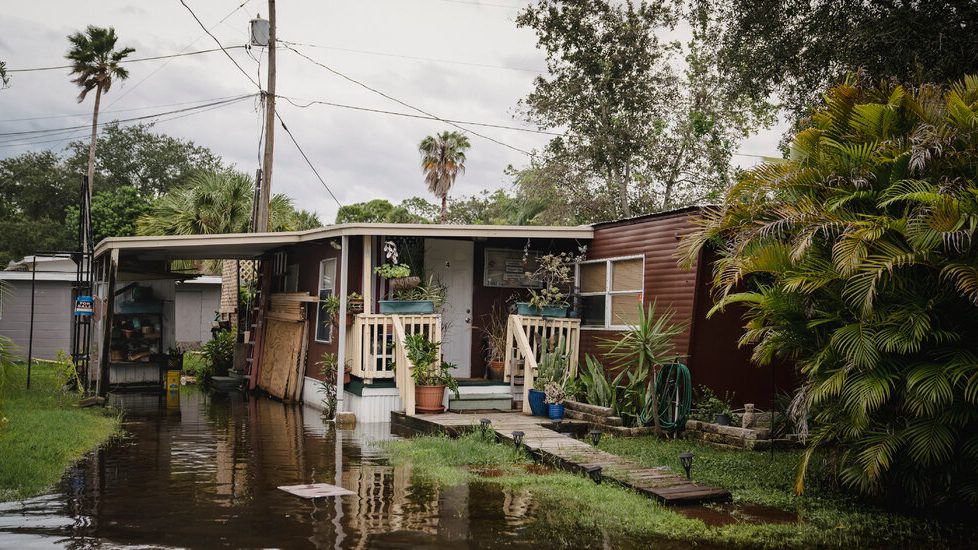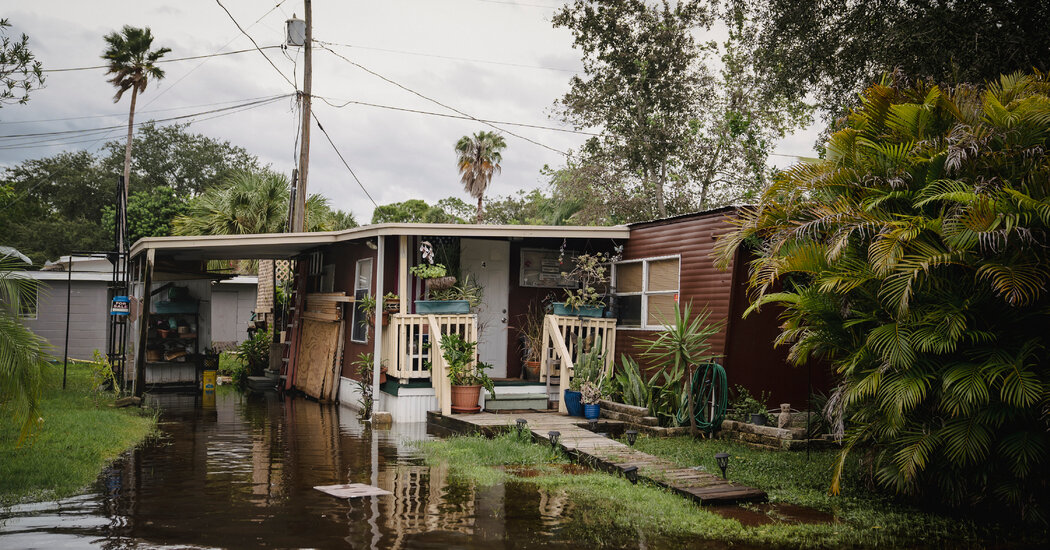Helene Brings Record Storm Surge to Florida


The first indications of damage along Florida’s Gulf Coast from Helene’s storm surge were emerging Friday morning, hours after the storm made landfall as the most powerful ever to hit the state.
Storm surge from Helene, which the authorities have warned could be “unsurvivable,” was moving entire mobile homes in Steinhatchee, a coastal community where gauges recorded water levels of about 10 feet late Thursday, the National Weather Service said.
It was too early to know the full extent of the storm surge and the damage it had caused early Friday, in part because several gauges had stopped working, said Parks Camp, a National Weather Service meteorologist in Tallahassee. Water level recordings in Steinhatchee, for example, rose rapidly until the gauge stopped working just before midnight, he said.
But it was clear that Helene had broken storm surge records across Florida’s Gulf Coast, many of which were last set in August 2023 when Hurricane Idalia drenched the same area. The Alafia River, which flows into Tampa Bay, peaked at 9.4 feet shortly after midnight, nearly three feet above the record set last year.
Storm surge — the rise in water levels caused by strong winds pushing ocean water ashore — is the leading cause of death from hurricanes, according to the National Hurricane Center. Rainfall, tides, waves and freshwater flow can contribute to the total rise in water level.
The surges can happen rapidly, sometimes leaving no time to act for people in their path. Just six inches of fast-moving floodwater can knock over an adult, the center said. It takes two feet of rushing water to carry away most vehicles, including pickups and S.U.V.s.
Storm surges can also erode beaches and coastal highways. Buildings that survive the winds of a hurricane can be damaged if their foundations are undermined by erosion.
With Helene, the threat of storm surge was the most serious along the Big Bend coast, where surges were expected to peak at 15 to 20 feet. But a storm surge warning was in place for nearly all of Florida’s western coast.
Water levels were expected to come down slowly Friday morning, but they were unlikely to return to normal levels by the time people wake up, Mr. Camp said. He urged people to wait until the waters recede and to beware of downed power lines.
On Thursday night, hundreds of people called 911 for help evacuating their homes in areas flooded by storm surge, which was expected to linger into Friday, the Pinellas County Department of Emergency Management said.
Some evacuated their homes. Bradley Tennant, 43, trudged out of his home in St. Petersburg and navigated flooded streets on Thursday. At night, he and his family watched their home flood through their security cameras, he said.
In Tampa, there were 78 evacuations and water rescues overnight after storm surge from Helene caused heavy flooding, according to the city.
Near Old Tampa Bay, Mark Hoffert, 53, who had initially planned to stay in his mobile home with his son, decided to leave after waters slowly crept into his living space, rising to six inches high.
Outside, he waded barefoot through chest-deep waters in the darkness to get to his neighbor’s car, which was parked on higher ground, and drive away. But, he said, his son stayed behind.
“I told him I wanted him to get out,” he said. “But he’s 20 years old. What can I do?”
The post Helene Brings Record Storm Surge to Florida appeared first on New York Times.
